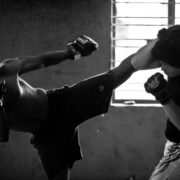
The core muscles play a pivotal role in providing stability, balance, and strength to the human body. For individuals engaged in various physical activities, including exercise and sports, maintaining a healthy core is essential. Core muscle injury can not only impede physical performance but also lead to long-term discomfort. In this article, we will explore strategies to prevent core muscle injuries and foster a robust foundation for overall well-being.
1. Understanding the Core Muscles:
The core muscles are a complex network of muscles that includes the abdominals, obliques, lower back, and pelvic floor muscles. These muscles work together to support the spine, pelvis, and surrounding structures. Understanding the anatomy of the core is the first step in preventing injuries.
2. Proper Warm-Up and Stretching:
Before engaging in any physical activity, it’s crucial to warm up the body and specifically target the core muscles. Dynamic stretches, such as leg swings and torso twists, can help increase blood flow to the core and improve flexibility. This prepares the muscles for more intense activity, reducing the risk of strains or injuries.

3. Gradual Progression in Exercise:
Avoid the temptation to push yourself too hard, too quickly. Whether you’re starting a new fitness routine or increasing the intensity of your current one, allow your core muscles to adapt gradually. Rapid progression can lead to overuse injuries and strain on the core muscles. Progress at a pace that allows your body to build strength and resilience over time.
4. Balanced Core Workouts:
Ensure that your core workouts target all the muscle groups evenly. Neglecting certain areas of the core can create muscle imbalances, increasing the risk of injury. Incorporate exercises that engage the rectus abdominis, transverse abdominis, obliques, and lower back muscles. A balanced approach contributes to overall core stability.
5. Proper Lifting Techniques:
Whether in the gym or during daily activities, using proper lifting techniques is essential for preventing core muscle injury.

Bend at the knees, engage your core muscles, and lift with your legs rather than your back. This technique reduces the strain on the lower back and minimizes the risk of injury.
6. Cross-Training and Variety:
Avoid repetitive movements that place excessive stress on specific core muscles. Incorporate cross-training and a variety of exercises into your routine. This not only reduces the risk of overuse injuries but also ensures that all core muscle groups are engaged in different ways.

7. Maintain a Healthy Body Weight:
Excess body weight can place additional strain on the core muscles, particularly the lower back and abdominal area. Maintain a healthy body weight through a balanced diet and regular exercise. This not only promotes overall health but also reduces the load on your core muscles during daily activities.
8. Listen to Your Body:
Pay attention to any signs of discomfort or pain in the core area. Ignoring these signals can lead to more severe injuries. If you experience persistent pain, it’s crucial to consult with a healthcare professional for proper diagnosis and guidance on recovery.
Summary
Building a strong and resilient core is a gradual process that requires dedication and consistency. By incorporating these strategies into your routine, you can significantly reduce the risk of core muscle injury, enhance your physical performance, and lay the foundation for a healthier, more active lifestyle. Remember, a strong core is not only about aesthetics but is fundamental to overall well-being.
You Also Want To Know
What are core muscle injury symptoms?
Core muscle injury, commonly known as sports hernias or athletic pubalgia, can manifest with various symptoms. Individuals experiencing a core muscle injury may report persistent pain in the lower abdomen, often aggravated by activities such as twisting, turning, or sudden changes in direction.
The pain may radiate to the groin, inner thighs, or the testicles in men. Other common symptoms include tenderness in the abdominal muscles, weakness in the core area, and discomfort during activities that engage the core, like coughing or sneezing. It’s important to note that core muscle injury can vary in severity, and while some individuals may have mild discomfort, others may face more debilitating symptoms.
If persistent pain or discomfort is present, seeking medical evaluation is crucial for an accurate diagnosis and appropriate treatment.
Core Muscle Injury Treatments
The treatment of core muscle injury typically involves a multifaceted approach aimed at reducing pain, promoting healing, and restoring strength and flexibility. Initially, rest is often recommended to allow the injured muscles to heal.
Ice and anti-inflammatory medications may be used to manage pain and reduce swelling. Physical therapy plays a crucial role in the rehabilitation process, focusing on exercises to strengthen the core muscles, improve flexibility, and correct movement patterns.
Specific rehabilitation exercises may include core stabilization exercises, stretching, and gradual reintroduction of functional movements. In more severe cases or when conservative measures are insufficient, surgical intervention may be considered. Surgical options vary but often involve repairing the damaged muscles or addressing any underlying issues contributing to the injury.
The choice of treatment depends on the severity of the injury, individual circumstances, and the recommendations of healthcare professionals overseeing the case. Patients are advised to follow their healthcare provider’s guidance for a structured and progressive rehabilitation program tailored to their specific condition.
Core Muscle Injury Surgery
Core muscle injury surgery, often referred to as sports hernia repair or athletic pubalgia surgery, is considered when conservative treatments fail to alleviate symptoms or in cases of severe muscle or tendon damage. The surgical procedure aims to repair torn or damaged muscles in the core region, typically focusing on the rectus abdominis, obliques, or other involved structures.
Surgeons may use minimally invasive techniques, such as laparoscopy, or open surgery, depending on the extent and nature of the injury. During the procedure, the surgeon may reattach torn muscles, remove damaged tissue, or reinforce weakened structures. Post-surgery, a structured rehabilitation program is essential to ensure optimal recovery.
Patients can expect a period of rest, followed by a gradual reintroduction of physical activities under the guidance of a physical therapist. While surgery can be an effective solution for some individuals with persistent core muscle injuries, it is usually considered after careful evaluation and when conservative measures prove insufficient in restoring functionality and reducing pain.
Core Muscle Injury Evaluation and Treatment in Athelete
The evaluation of a core muscle injury is a comprehensive process designed to accurately diagnose the nature and extent of the problem. Typically initiated with a thorough medical history review and a discussion of symptoms, healthcare professionals may then perform a physical examination, focusing on the core region.
Specialized tests, such as imaging studies like ultrasound, MRI, or CT scans, may be employed to visualize the soft tissues and identify any tears, inflammation, or structural abnormalities. Additionally, functional assessments and specific maneuvers that provoke pain or discomfort, such as resisted muscle testing, may be conducted to pinpoint the affected areas.
In some cases, diagnostic injections or electromyography (EMG) may be utilized to gather additional information. This comprehensive evaluation helps healthcare providers make an accurate diagnosis, differentiate a core muscle injury from other potential causes of pain, and develop an effective treatment plan tailored to the individual’s specific condition.
Frequently Asked Questions (FAQ) on Core Muscles:
1. What are core muscles? Core muscles refer to the group of muscles located in the torso, including the abdomen, lower back, pelvis, and hips. These muscles work together to provide stability, support, and assist in various movements.
2. Why is core strength important? Core strength is crucial for maintaining proper posture, preventing injuries, and supporting overall body functionality. A strong core enhances balance, stability, and helps in performing daily activities and sports more efficiently.
3. Which muscles make up the core? The core includes muscles such as the rectus abdominis, obliques (internal and external), transverse abdominis, erector spinae, and pelvic floor muscles. These muscles work in harmony to support the spine and pelvis.
4. How can I strengthen my core muscles? Effective core exercises include planks, crunches, leg raises, Russian twists, and bridges. Incorporate a variety of exercises that target different core muscles to ensure comprehensive strength development.
5. Can core exercises help with lower back pain? Yes, strengthening the core can contribute to reducing lower back pain. A strong core provides better support for the spine and helps maintain proper alignment, which can alleviate stress on the lower back.
6. How often should I train my core? It is generally recommended to include core exercises in your routine 2-3 times per week. However, the frequency may vary based on individual fitness goals and overall workout routine.
7. Are there alternatives to traditional core exercises? Yoga and Pilates are excellent alternatives that emphasize core strength and flexibility. Additionally, activities like swimming, cycling, and even certain compound weightlifting exercises indirectly engage and strengthen the core.
8. Can I do core exercises every day? While core exercises can be performed daily, it’s important to allow for proper rest and recovery. Overtraining can lead to fatigue and potential injury. A well-rounded fitness program includes a variety of exercises targeting different muscle groups.
9. Is diet important for core muscle development? Nutrition plays a crucial role in overall muscle development, including the core. A balanced diet with an adequate amount of protein, carbohydrates, and fats supports muscle growth and repair.
10. How long does it take to see results in core strength? Results vary depending on individual factors such as genetics, frequency of training, and intensity of exercises. Consistent training, combined with proper nutrition, can lead to noticeable improvements in core strength within a few weeks to a few months.
Before you go, do check out some of our amazing web stories and other articles.
Related posts:
- Yoga Arm Balances – How To Master
- 5 Tips to Help Men and Women Combat Facial Wrinkles
- Aging and Dental Health – A Vital Connection You Need to Know
- Understanding Lyme Disease: Causes, Symptoms, and Treatment
- Hearing Aids May Reduce Your Risk of Dementia By Half
- 10 Stress-Relief Apps to Manage Work-Related Stress
What's Your Reaction?
One of my friends once said, I am in love with words and a zoned out poser... well, I will keep it the way it has been said! Besides that you can call me a compulsive poet, wanna-be painter and an amateur photographer











